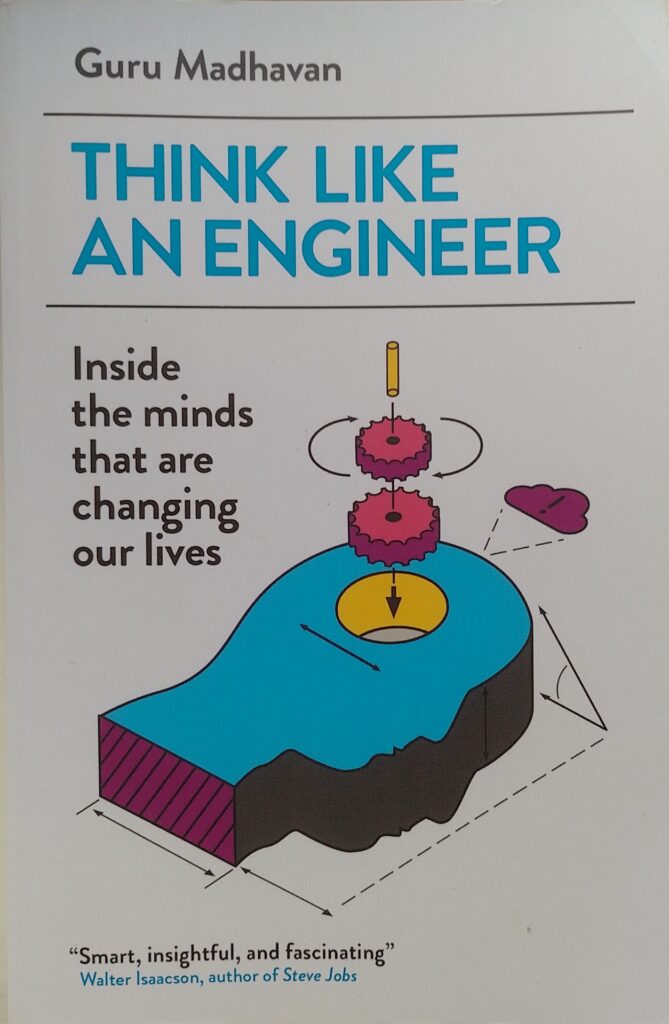First published 2015. Oneworld paperback, 2022, pp 253 (190 main text), c. 44,000 words (main text).
This book attempts to describe how engineers think, and what makes that different from, say, how scientists or artists think. To a degree this is a fool’s errand: there are as many ways of thinking as there are people on this planet, and there is no ‘engineering type’. The book is a collection of anecdotes and ideas the author presumably found interesting. There is no structured research results or data to support any notion that engineers think differently from anyone else. There are precious few comparisons with other professions’ way of thinking, except perhaps in a couple of cases where the author suggests similarities between the way economists and engineers think. The author doesn’t even attempt to define what an engineer is. To me, a retired engineer, it is about creating practical things. Traditionally these have been physical objects, but increasingly what is created is software, with no physical manifestation. These objects are intended to serve some function, as opposed to artists’ creations that are intended to serve to stimulate an emotional response.
Madhaven has selected a number of stories that are intended to illustrate the types of thinking that he considers engineers’ exhibit. These examples usually start with a practical problem, e.g. detecting cheating in marathon runners, determining the whereabouts of railway freight wagons, improving the effectiveness of artillery, speeding retail transactions, developing a production system for penicillin. These stories are entertainingly written. However, I wasn’t always convinced that he had illustrated the superiority of the invention or that the thinking that led to it was somehow special to engineers. For example, he describes the Frenchman, Gribeauval’s development of cannons, claiming they were superior in practice. Maybe it is obvious: more mobile, interchangeable parts, etc., but the hard practical result only became clear in Napolean’s devastating use of artillery, something which Madhaven doesn’t mention.
Sometimes the way this book is written is confusing. He states at one point: ‘The engineering mind-set has three essential properties. The first is the ability to “see” structure where there is none.’ [sic] [p23] One might expect the other two properties to be described next, but instead he goes on for two pages expanding on that statement before finally getting to list the second attribute. The third is not introduced until another page later. While not a bad list to frame a thesis, one could easily argue with his choices: ‘the ability to see structure’ [p23], ‘adeptness at designing under constraints’ [p25], and ‘the ability to make considered judgments about solutions and alternatives’ [p25/6]. Anyone working in a commercial environment will equally need these attributes to be successful, as indeed might an artist, a doctor or even a politician.
A list of seven questions to ask when undertaking some innovation [p24], attributed to George Heilmeir, formerly of DARPA, is useful, but again applies equally well to a commercial undertaking as to an engineering project.
Interesting parallels are drawn between engineering and economics around utility maximisation and mechanism design [p55]. Dotted throughout the book are some good observations: ‘producing utility under constraints’ [p26]; ‘Having your mind prepared to exploit and opportunity is an important precursor to spotting one’ [p63] (experience is useful?); aggressive versus conservative design trade-offs [p74]; on interpreting a client’s brief [p149]; understanding ‘the Japanese notion of wabi-sabi’ – how everything real is imperfect, impermanent and improvable [p155]. None of these is exclusive to engineers.
Mostly the writing is very clear and highly readable. The stories used to illustrate the concepts are mostly well chosen but limited for lack of detail and sometimes fragmented. Little evidence is presented of a thought process that fed through to the nitty-gritty of problem resolution. There is a rather pointless diversion in classifying engineers as introverts using a tired joke – some are, some aren’t. There are occasional howlers like something that ‘peaked at exponential rates’ [p156], statements of the obvious like consumer testing is a good idea [p160], and pointless questions ‘Is engineering good or bad?’ [p177].
Just over two-thirds of the way through the pages the narrative stops. The remainder of the book is a massive list of sources and resources, acknowledgements and an index.
This is a mostly pleasurable read with some thought-provoking ideas – after dinner conversation stuff. As a thesis it is unconvincing and poorly structured. Madhaven would have been better employed structuring his argument and presenting data comparing engineers with others, rather than creating laundry lists of every person he has ever spoken to and every item he has ever read.
National Academy of Engineering biography of Madhaven: https://www.nae.edu/203993/Guru-Madhavan
Others’ reviews of the book: https://www.goodreads.com/book/show/26132781-think-like-an-engineer?ref=nav_sb_ss_1_18
© William John Graham, December 2023

